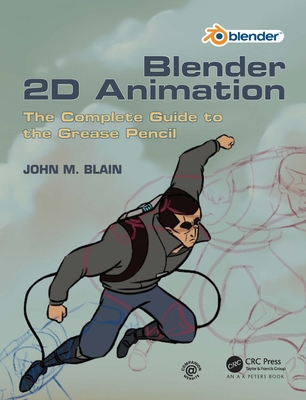Numerical Linear Algebra
暫譯: 數值線性代數
Lloyd N. Trefethen, David Bau III
- 出版商: Cambridge
- 出版日期: 1997-06-01
- 售價: $3,240
- 貴賓價: 9.5 折 $3,078
- 語言: 英文
- 頁數: 184
- 裝訂: Paperback
- ISBN: 0898713617
- ISBN-13: 9780898713619
-
相關分類:
線性代數 Linear-algebra
已絕版
買這商品的人也買了...
-
 $1,000Advanced Digital Logic Design Using Verilog, State Machines, and Synthesis for FPGA's (Hardcover)
$1,000Advanced Digital Logic Design Using Verilog, State Machines, and Synthesis for FPGA's (Hardcover) -
 High-Level Synthesis: from Algorithm to Digital Circuit (Paperback)
High-Level Synthesis: from Algorithm to Digital Circuit (Paperback)$4,600$4,370 -
 Learning From Data (Hardcover)
Learning From Data (Hardcover)$1,200$1,140 -
 $4,731Architectures for Computer Vision: From Algorithm to Chip with Verilog (Hardcover)
$4,731Architectures for Computer Vision: From Algorithm to Chip with Verilog (Hardcover) -
 C++ 標準庫-學習教本與參考工具, 2/e (書側有些許黴斑,不介意再下單)
C++ 標準庫-學習教本與參考工具, 2/e (書側有些許黴斑,不介意再下單)$1,200$948 -
 Heterogeneous Computing with OpenCL 2.0, 3/e (Paperback)
Heterogeneous Computing with OpenCL 2.0, 3/e (Paperback)$2,880$2,736 -
 優化 C++|提高程式效能的有效技術 (Optimized C++: Proven Techniques for Heightened Performance)
優化 C++|提高程式效能的有效技術 (Optimized C++: Proven Techniques for Heightened Performance)$680$537 -
 $403Unity AR 增強現實完全自學教程 (全彩)
$403Unity AR 增強現實完全自學教程 (全彩) -
 輕課程 快快樂樂學 AR影像魔法 - 使用 Unity 與 Vuforia 開發套件
輕課程 快快樂樂學 AR影像魔法 - 使用 Unity 與 Vuforia 開發套件$220$198 -
 Unity 3D\2D 手機游戲開發:從學習到產品, 4/e
Unity 3D\2D 手機游戲開發:從學習到產品, 4/e$594$564 -
 Unity 遊戲設計育成攻略
Unity 遊戲設計育成攻略$560$476 -
 $267C++ 代碼整潔之道:C++17 可持續軟件開發模式實踐 (Clean C++: Sustainable Software Development Patterns and Best Practices with C++ 17)
$267C++ 代碼整潔之道:C++17 可持續軟件開發模式實踐 (Clean C++: Sustainable Software Development Patterns and Best Practices with C++ 17) -
 C++ Primer, 5/e (繁體中文版)
C++ Primer, 5/e (繁體中文版)$990$782 -
 C++ Templates 全覽, 2/e (C++ Templates: The Complete Guide, 2/e)
C++ Templates 全覽, 2/e (C++ Templates: The Complete Guide, 2/e)$1,200$948 -
 C++17 教學範本, 5/e (Beginning C++17, 5/e)
C++17 教學範本, 5/e (Beginning C++17, 5/e)$880$616 -
 基於 FPGA 與 RISC-V 的嵌入式系統設計
基於 FPGA 與 RISC-V 的嵌入式系統設計$708$673 -
 量子電腦程式設計 (Programming Quantum Computers: Essential Algorithms and Code Samples)
量子電腦程式設計 (Programming Quantum Computers: Essential Algorithms and Code Samples)$680$537 -
 深度探索 C++14 (Discovering Modern C++: An Intensive Course for Scientists, Engineers, and Programmers)
深度探索 C++14 (Discovering Modern C++: An Intensive Course for Scientists, Engineers, and Programmers)$768$730 -
 Python × Network 一拍即合:自動化、程式化和 DevOps 的一站式解決方案 (Mastering Python Networking, 3/e)
Python × Network 一拍即合:自動化、程式化和 DevOps 的一站式解決方案 (Mastering Python Networking, 3/e)$780$608 -
 Python for DevOps|學習精準有效的自動化 (Python for Devops: Learn Ruthlessly Effective Automation)
Python for DevOps|學習精準有效的自動化 (Python for Devops: Learn Ruthlessly Effective Automation)$780$616 -
 提升程式設計師的面試力|189道面試題目與解答, 6/e (修訂版) (Cracking the Coding Interview : 189 Programming Questions and Solutions, 6/e)
提升程式設計師的面試力|189道面試題目與解答, 6/e (修訂版) (Cracking the Coding Interview : 189 Programming Questions and Solutions, 6/e)$980$774 -
 Architecting High-Performance Embedded Systems: Design and build high-performance real-time digital systems based on FPGAs and custom circuits (Paperback)
Architecting High-Performance Embedded Systems: Design and build high-performance real-time digital systems based on FPGAs and custom circuits (Paperback)$1,780$1,691 -
 $1,935Software Architecture with C++: Design modern systems using effective architecture concepts, design patterns, and techniques with C++20 (Paperback)
$1,935Software Architecture with C++: Design modern systems using effective architecture concepts, design patterns, and techniques with C++20 (Paperback) -
 圖說演算法:使用 C++ (暢銷回饋版)
圖說演算法:使用 C++ (暢銷回饋版)$500$330 -
 $1,080Blender 2D Animation: The Complete Guide to the Grease Pencil
$1,080Blender 2D Animation: The Complete Guide to the Grease Pencil
相關主題
商品描述
This is a concise, insightful introduction to the field of numerical linear algebra. The clarity and eloquence of the presentation make it popular with teachers and students alike. The text aims to expand the reader's view of the field and to present standard material in a novel way. All of the most important topics in the field are covered with a fresh perspective, including iterative methods for systems of equations and eigenvalue problems and the underlying principles of conditioning and stability. Presentation is in the form of 40 lectures, which each focus on one or two central ideas. The unity between topics is emphasized throughout, with no risk of getting lost in details and technicalities. The book breaks with tradition by beginning with the QR factorization - an important and fresh idea for students, and the thread that connects most of the algorithms of numerical linear algebra.
Contents: Preface; Acknowledgments; Part I: Fundamentals. Lecture 1: Matrix-Vector Multiplication; Lecture 2: Orthogonal Vectors and Matrices; Lecture 3: Norms; Lecture 4: The Singular Value Decomposition; Lecture 5: More on the SVD; Part II: QR Factorization and Least Squares. Lecture 6: Projectors; Lecture 7: QR Factorization; Lecture 8: Gram-Schmidt Orthogonalization; Lecture 9: MATLAB; Lecture 10: Householder Triangularization; Lecture 11: Least Squares Problems; Part III: Conditioning and Stability. Lecture 12: Conditioning and Condition Numbers; Lecture 13: Floating Point Arithmetic; Lecture 14: Stability; Lecture 15: More on Stability; Lecture 16: Stability of Householder Triangularization; Lecture 17: Stability of Back Substitution; Lecture 18: Conditioning of Least Squares Problems; Lecture 19: Stability of Least Squares Algorithms; Part IV: Systems of Equations. Lecture 20: Gaussian Elimination; Lecture 21: Pivoting; Lecture 22: Stability of Gaussian Elimination; Lecture 23: Cholesky Factorization; Part V: Eigenvalues. Lecture 24: Eigenvalue Problems; Lecture 25: Overview of Eigenvalue Algorithms; Lecture 26: Reduction to Hessenberg or Tridiagonal Form; Lecture 27: Rayleigh Quotient, Inverse Iteration; Lecture 28: QR Algorithm without Shifts; Lecture 29: QR Algorithm with Shifts; Lecture 30: Other Eigenvalue Algorithms; Lecture 31: Computing the SVD; Part VI: Iterative Methods. Lecture 32: Overview of Iterative Methods; Lecture 33: The Arnoldi Iteration; Lecture 34: How Arnoldi Locates Eigenvalues; Lecture 35: GMRES; Lecture 36: The Lanczos Iteration; Lecture 37: From Lanczos to Gauss Quadrature; Lecture 38: Conjugate Gradients; Lecture 39: Biorthogonalization Methods; Lecture 40: Preconditioning; Appendix: The Definition of Numerical Analysis; Notes; Bibliography; Index.
Audience: Written on the graduate or advanced undergraduate level, this book can be used widely for teaching. Professors looking for an elegant presentation of the topic will find it an excellent teaching tool for a one-semester graduate or advanced undergraduate course. A major contribution to the applied mathematics literature, most researchers in the field will consider it a necessary addition to their personal collections.
商品描述(中文翻譯)
這是一本簡明且富有洞察力的數值線性代數領域介紹。其清晰且優雅的表達方式使其受到教師和學生的喜愛。該文本旨在擴展讀者對該領域的視野,並以新穎的方式呈現標準材料。書中涵蓋了該領域中所有最重要的主題,並以全新的視角探討,包括方程組和特徵值問題的迭代方法,以及條件性和穩定性的基本原則。內容以40堂講座的形式呈現,每堂課專注於一到兩個核心概念。整體主題之間的統一性在整本書中得到了強調,讀者不必擔心迷失在細節和技術性問題中。這本書打破傳統,首先介紹QR分解——這對學生來說是一個重要且新穎的概念,也是連結數值線性代數大多數算法的主線。
目錄:前言;致謝;第一部分:基礎。講座1:矩陣-向量乘法;講座2:正交向量和矩陣;講座3:範數;講座4:奇異值分解;講座5:更多關於SVD的內容;第二部分:QR分解和最小二乘法。講座6:投影算子;講座7:QR分解;講座8:Gram-Schmidt正交化;講座9:MATLAB;講座10:Householder三角化;講座11:最小二乘問題;第三部分:條件性和穩定性。講座12:條件性和條件數;講座13:浮點運算;講座14:穩定性;講座15:更多關於穩定性的內容;講座16:Householder三角化的穩定性;講座17:回代的穩定性;講座18:最小二乘問題的條件性;講座19:最小二乘算法的穩定性;第四部分:方程組。講座20:高斯消去法;講座21:樞紐;講座22:高斯消去法的穩定性;講座23:Cholesky分解;第五部分:特徵值。講座24:特徵值問題;講座25:特徵值算法概述;講座26:化簡為Hessenberg或三對角形式;講座27:Rayleigh商,反向迭代;講座28:不帶移位的QR算法;講座29:帶移位的QR算法;講座30:其他特徵值算法;講座31:計算SVD;第六部分:迭代方法。講座32:迭代方法概述;講座33:Arnoldi迭代;講座34:Arnoldi如何定位特徵值;講座35:GMRES;講座36:Lanczos迭代;講座37:從Lanczos到高斯求積;講座38:共軛梯度法;講座39:雙正交化方法;講座40:預處理;附錄:數值分析的定義;註釋;參考文獻;索引。
讀者對象:本書以研究生或高級本科生的水平撰寫,適合廣泛用於教學。尋求優雅主題呈現的教授將會發現這是教授一學期研究生或高級本科課程的絕佳教學工具。作為應用數學文獻的重要貢獻,該領域的大多數研究者將視其為個人收藏中必不可少的補充。



















